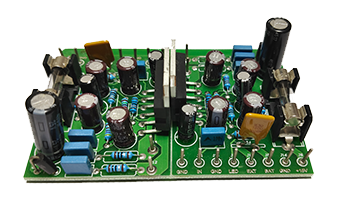News
Site Editor
 Site
/uploads/image/667d0e0257f45.png
The printed circuit board assembly (PCBA) is an integral part of electronic devices. It serves as the central hub connecting various components, providing both electrical and mechanical support to ensure the proper functioning of the device. Without PCBA, it would be nearly impossible for electronic devices to perform their intended functions effectively. In this article, we will explore the important functions of PCBA and understand its significance in modern electronics.
Site
/uploads/image/667d0e0257f45.png
The printed circuit board assembly (PCBA) is an integral part of electronic devices. It serves as the central hub connecting various components, providing both electrical and mechanical support to ensure the proper functioning of the device. Without PCBA, it would be nearly impossible for electronic devices to perform their intended functions effectively. In this article, we will explore the important functions of PCBA and understand its significance in modern electronics.
What is the function of PCBA
Views: 1764
Author: Site Editor
Publish Time: 2023-07-24
Origin: Site
The printed circuit board assembly (PCBA) is an integral part of electronic devices. It serves as the central hub connecting various components, providing both electrical and mechanical support to ensure the proper functioning of the device. Without PCBA, it would be nearly impossible for electronic devices to perform their intended functions effectively. In this article, we will explore the important functions of PCBA and understand its significance in modern electronics.
Electrical Connections and Signal Transmission
One of the primary functions of PCBA is to provide electrical connections between different electronic components. The PCB contains a network of copper tracks, also known as traces, which act as conductive pathways for the transmission of electrical signals. These traces enable communication between various components, such as microprocessors, memory chips, and power regulators, forming a cohesive circuit.
The design of
PCBA is critical in ensuring signal integrity and minimizing interference. The traces are carefully laid out according to signal requirements, considering factors such as impedance, length matching, and noise reduction. By optimizing the signal paths, PCBA helps in maintaining reliable and accurate data transmission, which is crucial for the proper functioning of electronic devices.
Mechanical Support and Component Mounting
PCBA not only facilitates electrical connections but also provides mechanical support to electronic components. Components such as resistors, capacitors, integrated circuits, and connectors are mounted on the PCB using appropriate techniques like surface mount technology (SMT) or through-hole technology (THT).
The PCB acts as a robust platform that holds the components firmly in place, preventing their movement or damage due to external vibrations or mechanical stress. Furthermore, PCBA allows components to be arranged in a compact and organized manner, optimizing space utilization and promoting efficient heat dissipation.
Power Distribution and Regulation
The power distribution function of PCBA is crucial for supplying electrical power to different components within an electronic device. The PCB includes power planes, which are copper layers specifically designed to distribute power throughout the circuit. These power planes ensure stable and sufficient power supply to all components, preventing voltage fluctuations or power surges.
In addition to power distribution, PCBA also incorporates power regulation mechanisms such as voltage regulators and filters. These components help maintain the desired voltage levels, filter out noise or unwanted signals, and protect sensitive components from damage. The efficient power management provided by PCBA contributes to the overall reliability and longevity of electronic devices.
Testing and Quality Control
PCBA plays a vital role in the testing and quality control of electronic devices. Before mass production, prototypes or samples of the PCBs are subjected to various tests to ensure they meet the desired specifications and standards. These tests include functionality testing, signal integrity analysis, and environmental stress testing.
PCBA also facilitates the implementation of automated testing procedures during production. Automated test equipment can quickly diagnose faults, inconsistencies, or defects in the assembled PCBs, improving the overall quality control process.
In conclusion, the function of PCBA extends beyond mere electrical connections. It provides mechanical support, power distribution, and regulation, as well as enables thorough testing and quality control. Without PCBA, modern electronic devices would not be able to function effectively or reliably. As technology continues to advance, the role of PCBA will remain critical in ensuring the seamless operation of electronic devices in various industries.